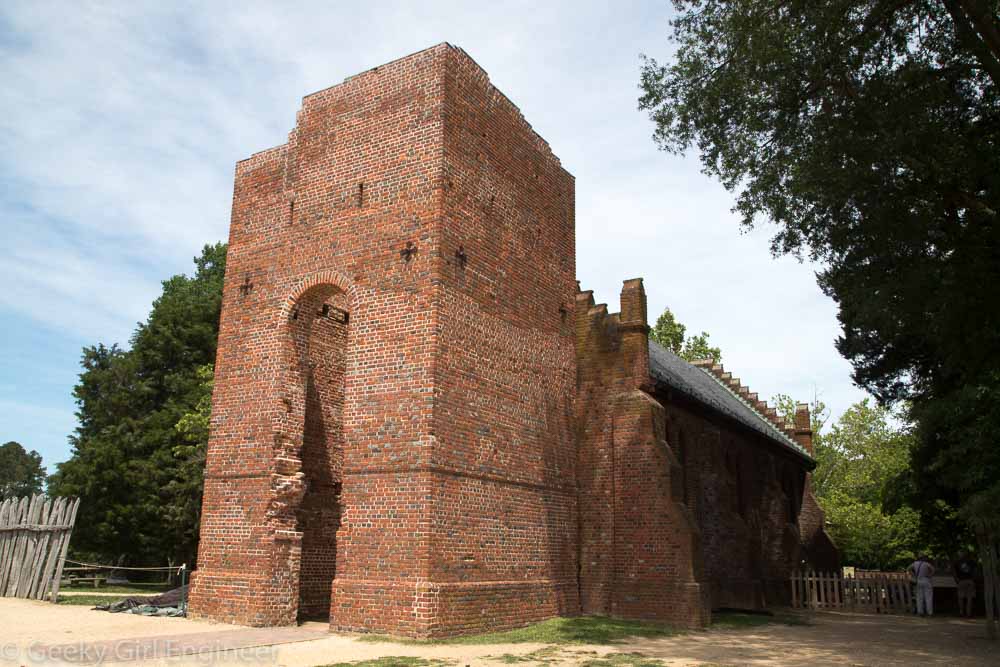My tour of Jamestown included a behind the scenes tour of the vault, where they keep many of the archeological finds and the laboratory where they process the finds. In the lab, our guide showed us how where they clean and dry the samples. She also explained how all the finds are identified and coded. My favorite part was her describing how they identify, collect, and store all artifacts found at the site, including potato chip bags, CDs, and USB drives. I suppose technically CDs are becoming historical objects.
The vault contains wonderful artifacts, and they are very clear to explain that the artifacts all represent historical trash. Essentially everything they have was found in a historical Jamestown trash hole. Many of the trash holes were water wells that became contaminated with salt water, so they just threw their trash in it for archeologists to dig up and treasure hundreds of years later. [Consider that next time you litter.] They have collected lots of bones from various wild and domesticated animals, pottery, glass, and metal objects. They have many old building material artifacts also. The collection is just amazing. What is even more amazing is what people throw away. Some things never change.











































